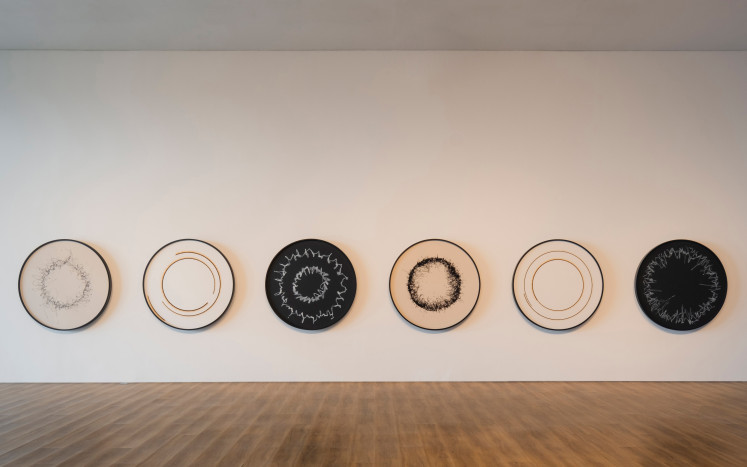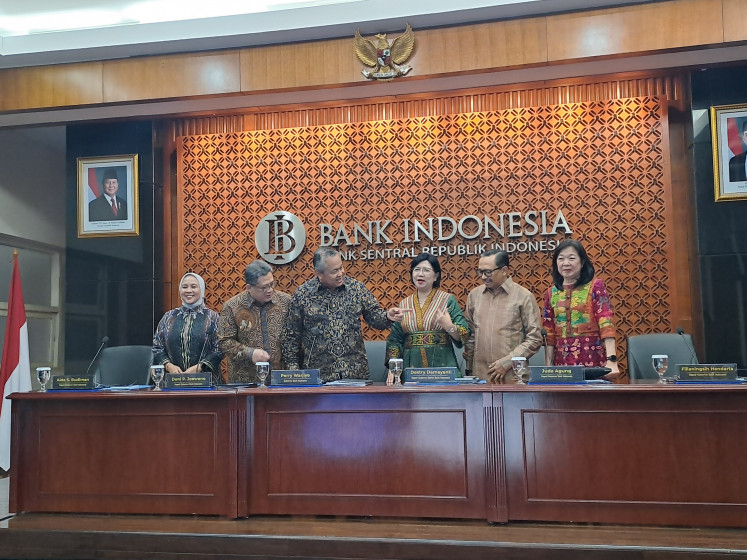Popular Reads
Top Results
Can't find what you're looking for?
View all search resultsPopular Reads
Top Results
Can't find what you're looking for?
View all search resultsBook Review: Exploring Southeast Asia's imperial history through art
Sarah Tiffin, through her new book with the National University of Singapore Press, Southeast Asia in Ruins: Art and Empire in the Early 19th Century, enumerates the importance of Raffles’ text during a period of history when colonialism was justified through art and its interpretation.
Change text size
Gift Premium Articles
to Anyone
W
hat importance does art hold in the representation of history? Very often, art is seen as a separate creative pursuit and given little attention in history or the way history can be told.
In September 1815, when Thomas Stamford Raffles, lieutenant-governor of the British interregnum government in Java, introduced the beauty of Java’s ruined candi (ancient temples) architecture to the British public, he started a series of explorations into the history of art of Southeast Asia, where scholars, within the ambit of their colonial bias, began evaluating the monuments, giving them a voice of their own.
Sarah Tiffin, through her new book with the National University of Singapore Press, Southeast Asia in Ruins: Art and Empire in the Early 19th Century, enumerates the importance of Raffles’ text during a period of history when colonialism was justified through art and its interpretation. The architectural ruins spoke about the ‘civilizing’ capability of the Javans and other people of the region, hence the presence of British democracy and Western ideals was necessary in the region.
(Read also: Track to Borobudur Temple may be reopened)
 Southeast Asia in Ruins: Art and Empire in the Early 19th Century by Sarah Tiffin(National University of Singapore Press/File)
Southeast Asia in Ruins: Art and Empire in the Early 19th Century by Sarah Tiffin(National University of Singapore Press/File)
The book is not an architectural treatise, nor does it laboriously explain each and every detail of the monuments as it is usually seen in academic books on art history. Rather, Tiffin lets the reader absorb the background of every work, understand the psyche of the author writing about a particular monument, his reasons for picking up certain aspects of it, and leaving out others.
For Tiffin, art and its interpretation in Southeast Asia didn’t just face a threat from the ingrained oriental attitude of the scholars, who let the beauty of many works fade against the Western or rather Grecian ideal, but also from a natural danger. Nature, an important part of Java and Sumatran art and architecture because of the close proximity it had to each monument, threatened the very existence of these monuments by slowly consuming them in its grip.
As Tiffin puts it, "To British sensibilities, the dense swathes of tropical jungle that covered large tracts of Southeast Asia were extraordinary and marvelous, but also predatory and dangerous… Java’s ruined candi, it seemed, were succumbing to an inexorable and merciless vegetal foe".
She also elucidates the details British commentators willingly left out in their works, for example the bias meted out to contemporary structures on religious practices. While the sites of worship for the Christian community were included in the publications, the drawing of the tomb of Sunan Giri, like many, was subjected to a flat and simplified embellishment, with no surrounding landscape or emotion.
Apart from Java, remains of Burma, Sumatra and other regions also find mention in the book, though Raffles and his work and life permeate the basic essence of the book. Art, for the colonizers, was viewed as a remnant of civil war and political turmoil in the region, which needed Western civilization to achieve a sense of purpose and direction.
(Read also: Singapore exhibition explores British Empire's artistic legacy)
 A painting by William Daniell titled, ‘The large temple at Brambánan’, from T.S. Raffles,The History of Java, Vol. 2 (London: 1817). (The Fryer Library, University of Queensland/File)
A painting by William Daniell titled, ‘The large temple at Brambánan’, from T.S. Raffles,The History of Java, Vol. 2 (London: 1817). (The Fryer Library, University of Queensland/File)
However, Raffles’ contribution to the history of the region can’t be denied. Raffles prided himself in being able to recognize and appreciate Prambanan and Borobudur Temples as ‘majestic works of art’. Indeed, Raffles’ ability to identify the important monuments and undertake detailed research does separate him as an administrator from the Dutch, who were present in Java before him but did little to document its glorious architecture.
The world is increasingly looking at the contribution of British colonial administrators on imperial art in Southeast Asia, be it in the recent Tate Modern exhibition or through studies on the same. The understanding of art from a colonial perspective is two pronged – it provides a reader a perspective into the author’s psyche, his mind-set influenced by Western thoughts and ideals, and his discovery and re-discovery of a region where local voices were few, and if present, were discarded for their lower historical value, according to the scholars.
For students of history, looking to understand colonial description of art, especially the work of Stamford Raffles, this book provides detailed insight. However, it may not be an easy read for a layman, for someone with no idea of the region, who is looking at enriching their perspective on art, and it may appear less descriptive for a person from an architecture background, for the book doesn’t delve much into the architectural descriptions or art form of the monuments either.
***
Ankita Mukhopadhyay is a business journalist based in New Delhi. She has been published in various Indian and international publications and holds a Masters degree in History of International Relations from the London School of Economics and Political Science. She can be reached on her twitter handle, @muk_ankita.
---------------
Interested to write for thejakartapost.com? We are looking for information and opinions from experts in a variety of fields or others with appropriate writing skills. The content must be original on the following topics: lifestyle ( beauty, fashion, food ), entertainment, science & technology, health, parenting, social media, and sports. Send your piece to community@jakpost.com. Click here for more information.











